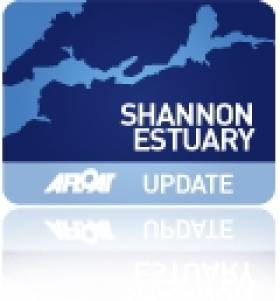Displaying items by tag: Air Show
#foynesairshow – One of the largest search and rescue (SAR) training exercises ever undertaken in Ireland will open the 2015 Foynes Air Show on Sunday, 26th July.
The Irish Air Corps, Naval Service (LÉ Samuel Beckett), Irish Coastguard, and Search and Rescue teams from all over the country will carry out their annual exercise in front of the estimated 15,000 people expected to attend the second annual air show.
Hosted by Foynes Flying Boat & Maritime Museum, the Air Show will also feature aircraft displays from across Europe, along with some of the world's top aerobatic pilots.
Among the aircraft taking to the skies over West Limerick and the Shannon Estuary will be a Russian Mini MiG, authentic World War Two aeroplanes, a Hawker Hunter fighter, a P51 Mustang and James Bond's BD-5 Micro-Jet. Meanwhile, Aer Lingus' first plane, the Iolar, will be flying in formation for one of the first times ever at a public display with three de Havilland Chipmunks in Air Corps colours.
The Air Show will also feature the world's only formation wingwalking display team, The Breitling Wingwalkers who will perform a sequence of formation loops and rolls while wingwalkers perform acrobatics on the wings.
The Air Show, which gets underway at 1pm and continues until 6pm, will also feature live music, food stalls and children's entertainment. Organisers say that Park and Ride services will be provided throughout the event to enhance access to and from the Air Show site
The Foynes Air Show was first held in 2014 when the Foynes Flying Boat & Maritime Museum marked the 75th anniversary of the first transatlantic commercial passenger flight that took place to the Flyingboat base, located 23 miles from Limerick City.
"We look forward to hosting a thrilling and exciting Air Show of an international standard which will feature even more aircraft and participants than our hugely successful inaugural show in 2014," commented Margaret O Shaughnessy the Director of Foynes Flying Boat & Maritime Museum.
"Foynes has a strong association with international aviation and has the world's only Flying Boat Museum featuring the world's only replica of B314 flying boat. The Air Show not only provides a wonderful day out for aviation enthusiasts and people of all ages but it also celebrates Foynes' historic place in world aviation history," she added.
Gerry Humphreys, Foynes Air Show Director said: "We are very excited to bring this free air show to Foynes again this year. We would like to thank our many sponsors without whose support this event would not be possible."
Aircraft taking part in the 2015 Foynes Air Show include:
Cold War Russian Aircraft - The Somerset-based Yakovlevs will perform a specialist airborne display team flying authentic cold war Russian war-bird aircraft in precise combinations of tight formations and aerobatics, high-speed passes and crosses.
BD5 - Made famous in the opening sequence of the James Bond film, Octopussy, the BD5 is a single-seat homebuilt aircraft created in the late 1960s by US aircraft designer Jim Bede
Sukhoi Su-26 - A single-seater aerobatics plane from the former Soviet Union, flown by ond of Ireland's top aerobatic pilots and engineers Dave Bruton
Hawker Hunter - A UK jet fighter flown by highly experienced former RAF Harrier pilot and Airbus Captain Andy Hill
Christen Eagle - Described as a true sports car of the sky, the 2-seat Eagle flown by Andrew Fenton will perform aerobatics
CAP 231 – Top Aerobstic Pilot Eddie Goggins "The Flying Dentist" returns to Foynes to fly an aircraft designed for competition aerobatics
Aviatika-MAI-890 (Mini-MiG) – 21 year old Pilot Harry Humphreys will fly his Aviatika-MAI-890, a pod-and-boom, pusher configuration biplane designed and built by the Moscow Aviation Institute (MAI) in Russia in the 1980s
RV4/8 - UK-based Team Raven will perform a 5-ship RV4/8 Aerobatic formation display
Vans RV7 - Gerry Humphreys and Eddie Goggins, known collectively as AerDynamics, are the first ever Irish civilian aerobatic formation team and will be flying the versatile Vans RV7 and the Cap 231 in a unique display of low level formation aerobatics and exciting head-on passes.
Killorglin based Approved Productions are the event managers for the upcoming Air Show, which is being supported and sponsored by Limerick City and County Council, The Irish Aviation Authority (IAA), Avolon, Wild Atlantic Way, Shannon Foynes Port Company, Irelandia Aviation, AerCap, Air Contractors, Rusal Aughinish and CPL Fuels.
























































